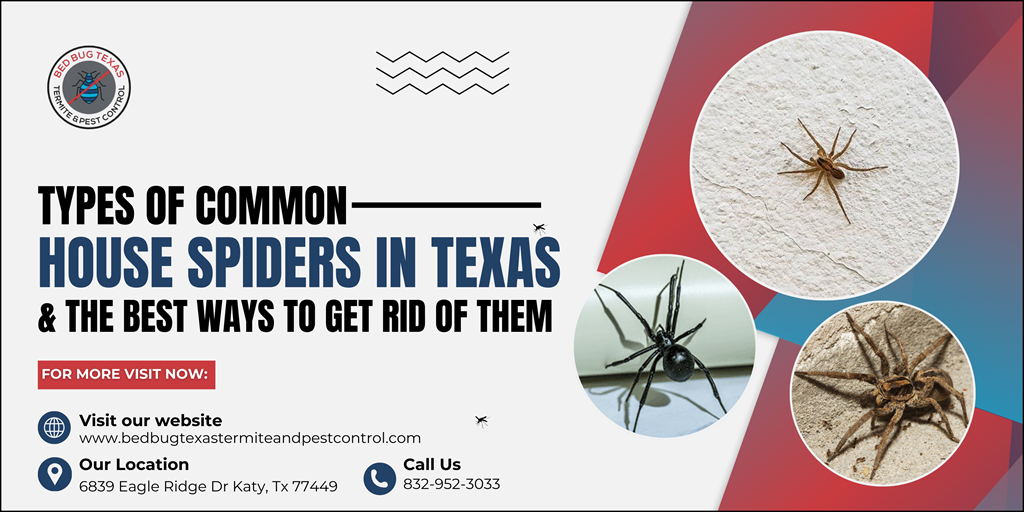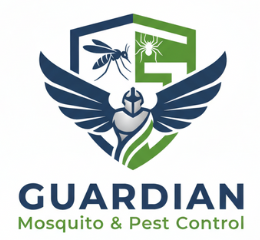
Some people scream when they see a spider, some grab a shoe, and others just pretend they don’t see them crawling up the wall. But if you live in Texas, you know house spiders are like regular tenants. However, the good news is that most of them aren’t out to get you. But if you don’t deal with them properly, they’ll keep multiplying, and soon you’ll find spider webs in every corner of your house.
In this blog, we’ll break down the types of house spiders you’ll most likely see in Texas homes, whether or not they bite, and the most effective ways to eliminate them.
What Are the Common House Spiders in Texas?
Texas is home to a wide range of spiders, but only a handful of them come inside your home. Here are the ones you should actually know about:
1. American House Spider
The American house spider is the classic “cobweb spider” you find in corners of ceilings, basements, and garages. They are small, grayish, and almost harmless to humans.
2. Wolf Spider
Wolf spiders, on the other hand, are big, hairy, and fast. They don’t spin webs but hunt. Which means you’ll usually spot them running across your floor towards other small insects. While they are intimidating, they rarely bite unless cornered.
3. Brown Recluse
Brown recluse is the one you actually need to worry about. As the name suggests, these spiders are light brown with a violin-shaped mark on their back. Their bite can cause serious skin damage and requires immediate medical attention.
4. Black Widow
You can recognise a black widow spider by its shiny black body and the red hourglass on its abdomen. You will usually find them in dark, undisturbed places like sheds, garages, and crawl spaces. These spiders are extremely dangerous, and you should get medical help immediately if they happen to bite you.
5. Jumping Spiders
Jumping spiders are small, stout, and often spotted on windowsills or walls. They don’t build webs but stalk and pounce on prey. Sure, they look scary up close, but they are mostly harmless.
Do House Spiders Bite?
Spiders like the American house spider and jumping spider are more nuisance than a threat. But brown recluse and black widow spiders are the exceptions. Their bites can cause severe reactions and should never be ignored.
So, if you wake up with a random red bump, it’s more likely a mosquito or bed bug than a house spider. Make sure to check the symptoms.
How to Get Rid of House Spiders For Good
1. Declutter Your Home
Spiders hide behind piles of boxes, laundry, or junk. If you don’t use them for a long time, you’ll start finding spider webs around them. Make sure to clean them occasionally.
2. Seal Entry Points
Spiders find their way inside your home through cracks around windows, gaps under doors, or holes in screens. Seal them up, and you’ll cut off new arrivals.
3. Vacuum Webs & Eggs
Don’t just kill the spider; vacuum up the web and any egg sacs, too. Otherwise, you’re only taking out the adult spiders while the kids are waiting to hatch.
4. Natural Repellents Work (Sometimes)
Peppermint oil, vinegar, and citrus are said to deter spiders. Spray them in corners, windowsills, and dark spaces. This isn’t a miracle cure, but it doesn’t hurt to try.
5. Use a Professional Pest Control Service
If you’re dealing with recluse or widow spiders or just don’t want to take the risk, call in a professional Local pest control company. They have the tools and treatments that actually get the job done quickly.
Final Words
Living in Texas means you’ll see spiders. That’s non-negotiable. But knowing the types of house spiders and which ones are dangerous can save you from needless fear (and useless extermination attempts). If DIY tricks feel like too much work or if the spiders keep coming back, get professional help and stop losing your sleep.
